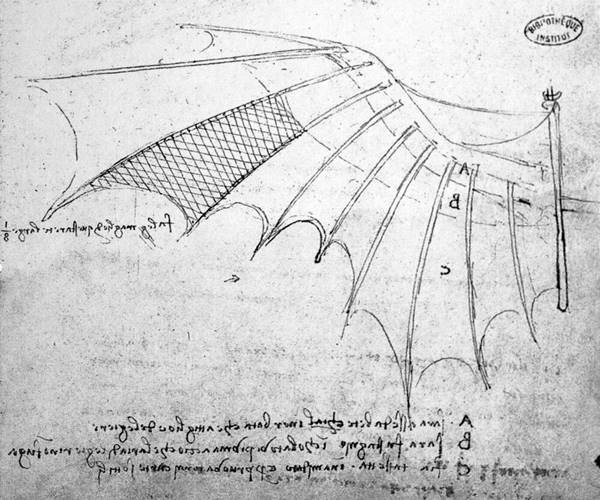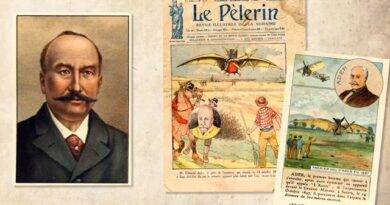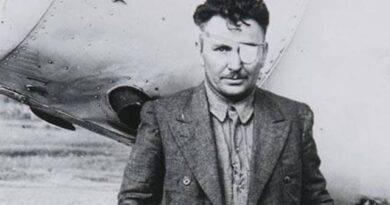Hezarfen Ahmed Celebi: Myth, Marvel, or Misunderstood Genius?
People are curious by nature. The interest in the unknown and the desire to explore are found in man. Thanks to these feelings, very critical discoveries have been made in world history. And humanity has reached the level it has today. Also, aviation has reached the level it has today via curious and inventive people. In this article, we will examine the life of Hezarfen Ahmed Celebi. Let’s take a closer look at who is Hezarfen Ahmed Celebi, an essential name in Turkish and world aviation history.
Hazerfen Ahmed Celebi born in 1609, Istanbul – Died in 1640, Algeria. It would not be wrong to say that Hezarfen Ahmed Celebi was an aviator, scholar and inventor. He is one of the first people in the world who managed to fly with human-made wings. Besides, he is a Turkish scholar who managed to fly for the first time. Sultan IV Murad reigned during the Ottoman Empire between 1623 and 1640. During Murad’s time, Ahmed Celebi made flying experiments.
Meaning of “Hezarfen”
In those days, Ahmed Celebi was known as “Hezarfen” among the people due to his extensive knowledge. “Hezar” is a word of Persian origin and means 1000. “Hezarfen”, on the other hand, means “thousand sciences”, that is, “the one who knows a lot”. The information about the flight experiments of Hezarfen Celebi depends only on what Evliya Celebi told in his “Travelbook” until now.
Hezarfan Ahmed Celebi, who was doing experiments and researching various subjects, realised a primitive form of today’s aircraft by taking another Turkish scholar named Ismail Cevheri as an example and idol. Before his historic flight, he also made trials in Okmeydani/Istanbul. One of the reasons for his trial flights was to measure the durability of the wings, which he prepared by examining the flight of birds. Then, one morning, in front of the eyes of the people of Istanbul, who gathered on the shores, he jumped from the Legendary Galata Tower into the air. He moved his wings and crossed the Bosphorus, and descended to the Uskudar district.

Hezarfen Celebi – Leonardo Da Vinci – Ismail Cevheri
Celebi studied and learned the findings of Cevheri thoroughly. It’s a fact that he was inspired by Ismail Cevheri, one of the Turkish scholars who lived in the 10th century. In his first flying experiments, he also drew attention to the drawings and studies of the Italian painter and scholar Leonardo Da Vinci. He was undoubtedly inspired Ismail Cevheri and Leonardo Da Vinci, and he conducted experiments on the subject.

Hezarfen Ahmed Celebi attached bird-wing-like equipment to his body. Then he left himself in the void from Galata tower and passed the Bosphorus. This flight was about 3358 meters from Galata tower to Uskudar. Hezarfen Celebi is undoubtedly one of the crucial figures in Turkish and World aviation history.
This flight event of Ahmed Celebi had significant repercussions on the Ottoman Empire and Europe. IV Murad also appreciated this flight. Murad watched the flight from the Sinan Pasha Mansion in Sarayburnu. He was very interested in Ahmed Celebi at first. Besides he even rewarded him with “a bag of gold”, according to Evliya Celebi. However, the Sultan doubted the existence of such a knowledgeable and resourceful man; he exiled him to Algeria, saying, “This man is a man to be hated (to be feared), whatever he wishes, he can do. It is not permissible for such people to stay.” Hezarfen died there.
The Man, the Myth, the Maybe-Flight
Hezarfen Ahmed Celebi (1609-1640) is a captivating figure in Ottoman history. Shrouded in a blend of fact and legend, he’s celebrated as a daring inventor who achieved a feat of early human flight. But how much truth is behind the legend?
The Flight and Today’s Knowledge
Ahmed Celebi can’t fly a distance of 3358 meters from Galata Tower to Dogancilar/Uskudar simply by flapping wings like a bird with arm and muscle power. When examined with today’s aerodynamics, it would not be wrong to think that this flight could only be possible with a simple glider, which can rise and advance by taking advantage of air currents. These gliders are mostly practised as an amateur sport in holiday resorts.
Alternative Theories: A Controlled Descent, Not True Flight?
Historians propose alternative explanations. Hezarfen’s wings may have been more akin to hang gliders, allowing a controlled descent with the help of favorable wind currents. Another theory suggests he used a parafoil kite, creating lift but requiring strong winds for control.
Hezarfen Ahmed Celebi – Istanbul Beneath My Wings
The 1996 Turkish movie “Istanbul Beneath My Wings”, directed by Mustafa Altıoklar, deals with the flight story of Ahmed Celebi. The representative image of the flight was on one of the three commemorative stamps issued by the PTT Administration for the International Civil Aviation Congress convened in Istanbul on October 17, 1950. In late 2010, Ahmed Celebi was the subject of a three-dimensional short animation called “Hezarfen The Movie”.
Hezarfen Ahmed Celebi’s enduring legacy lies in the questions he leaves behind. Did he truly achieve a controlled flight? Or was it a daring descent aided by wind and rudimentary technology? Regardless, he embodies the human yearning to conquer the skies, a spirit that continues to inspire inventors and dreamers today.
References and Further Reading Links:
- https://www.britannica.com/biography/Evliya-Celebi
- https://www.motleyturkey.com/hezarfen-the-first-flying-person/
- ,https://en.wikipedia.org/wiki/Hez%C3%A2rfen_Ahmed_%C3%87elebi


